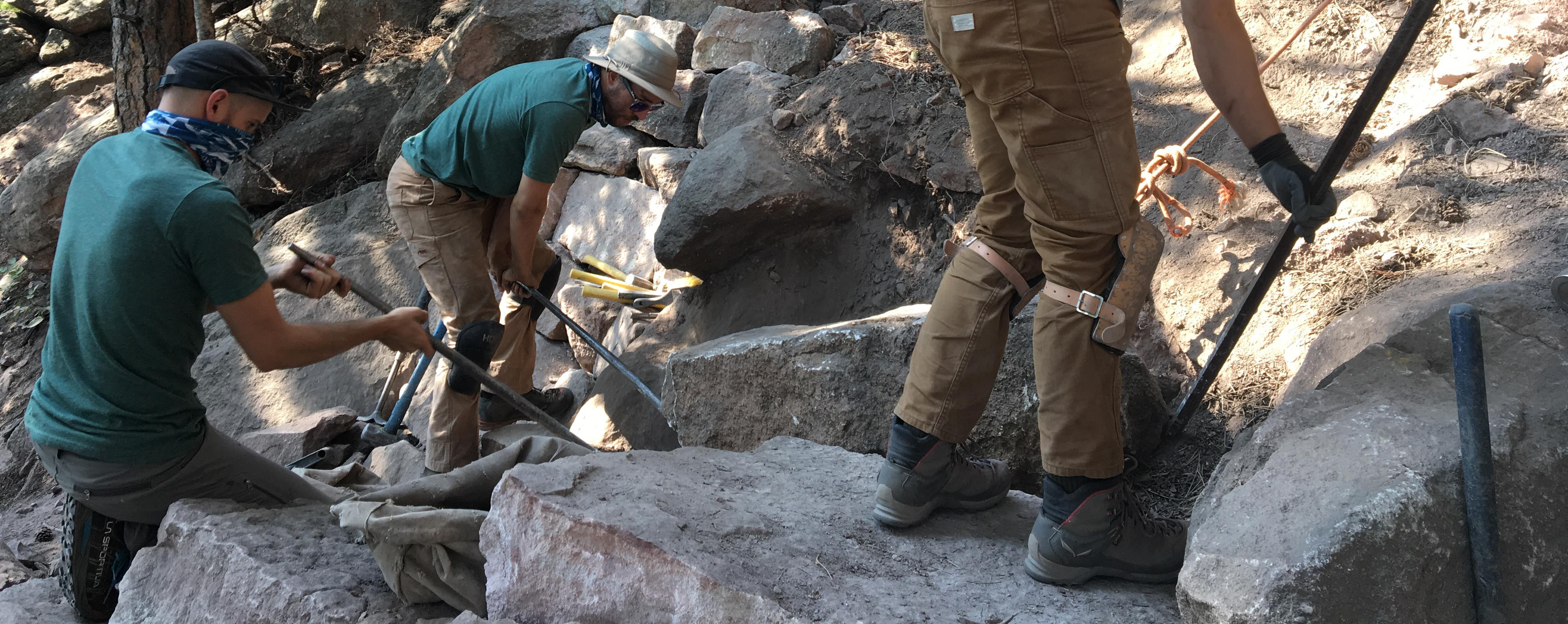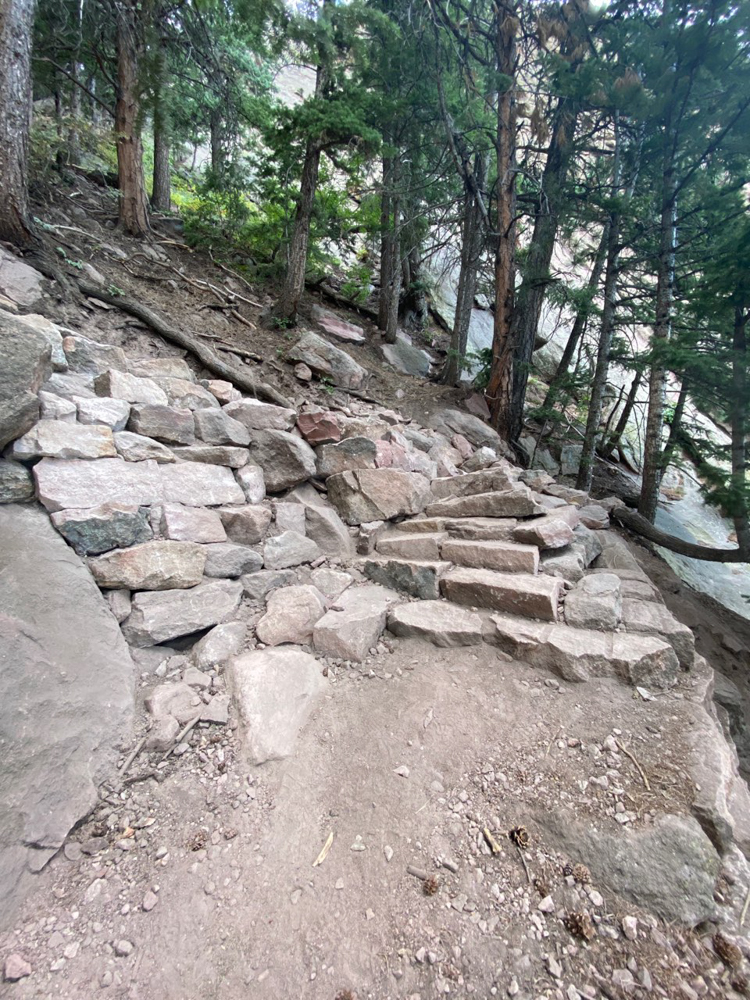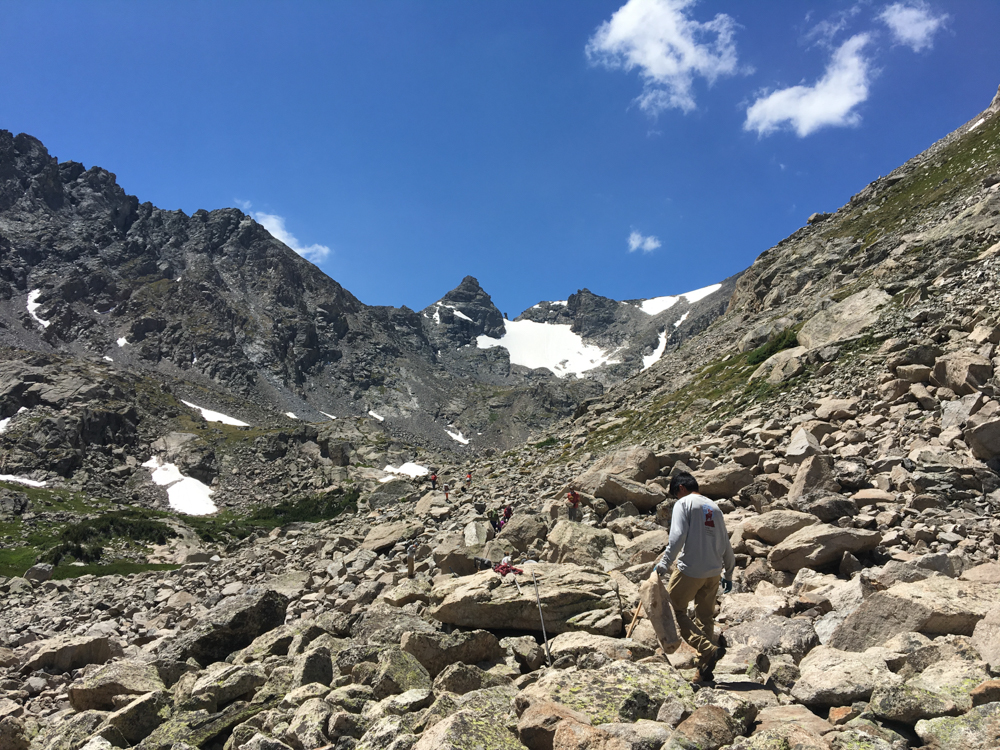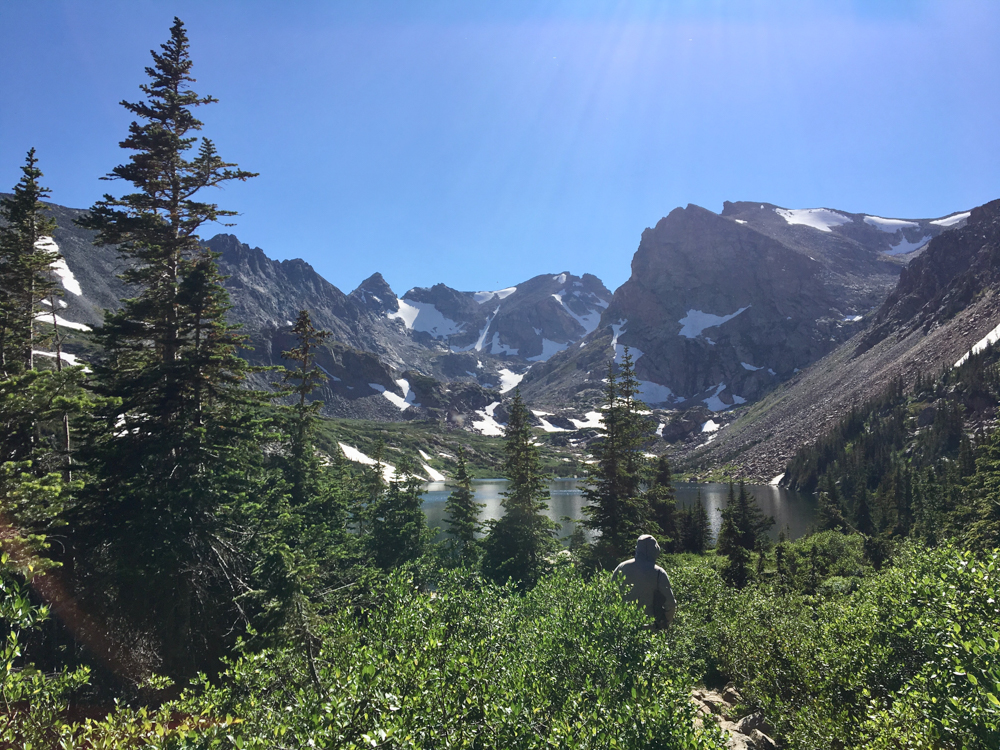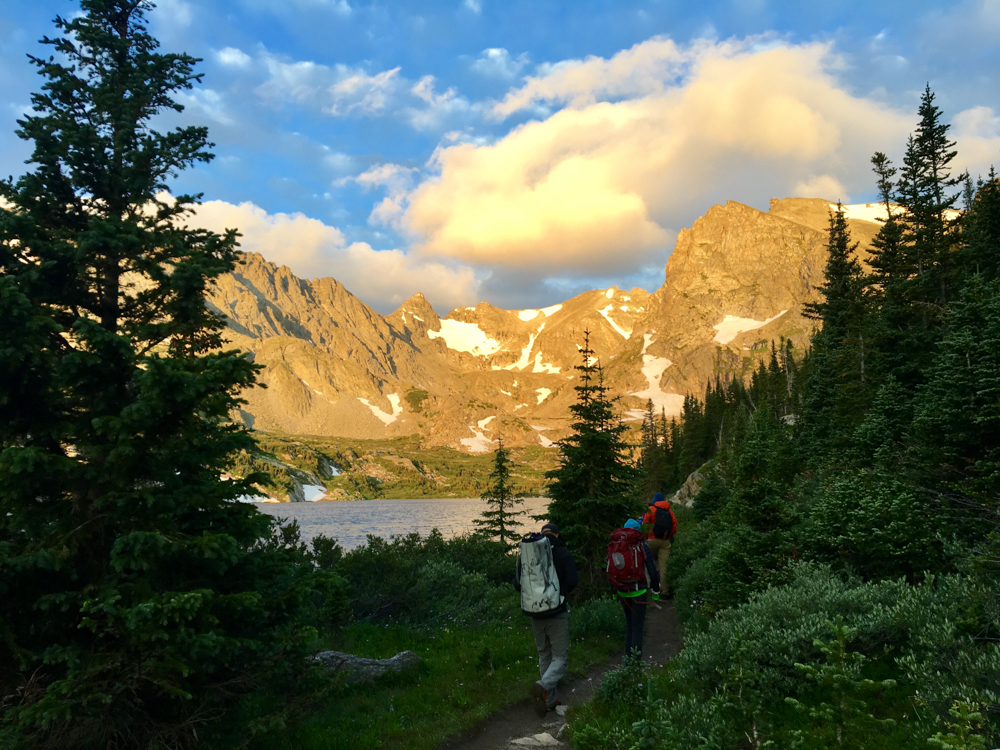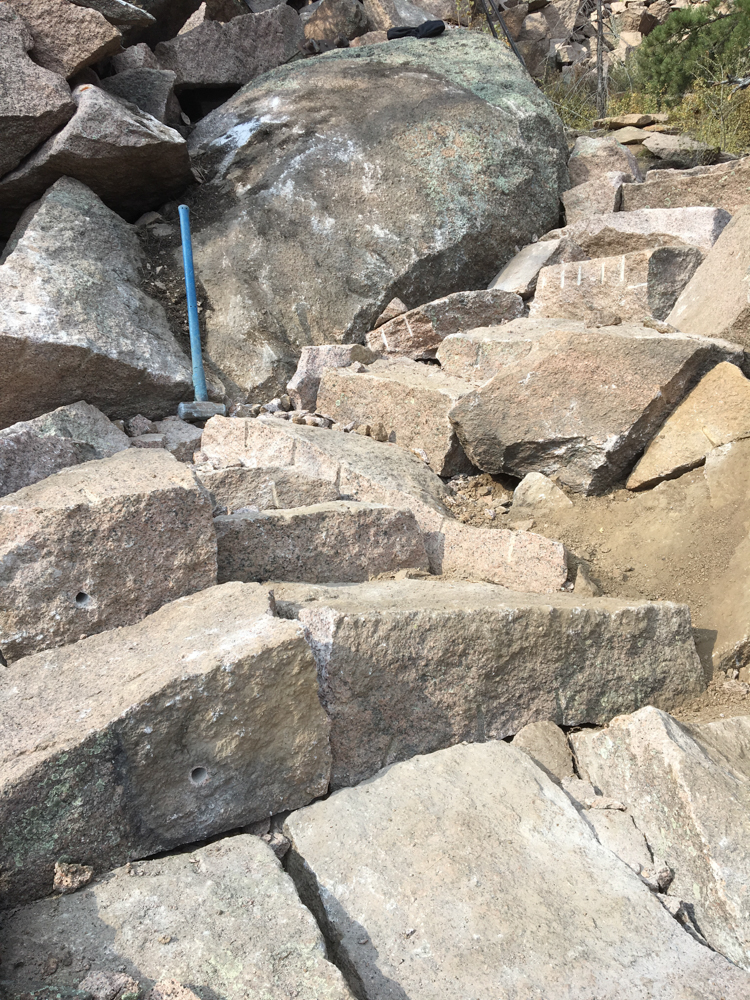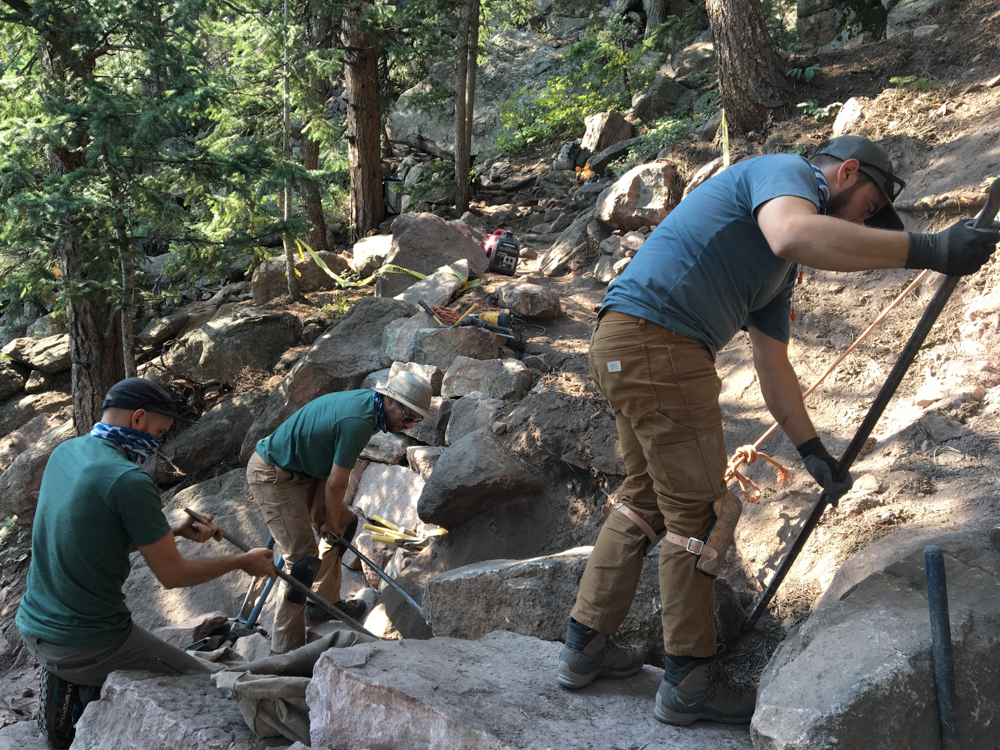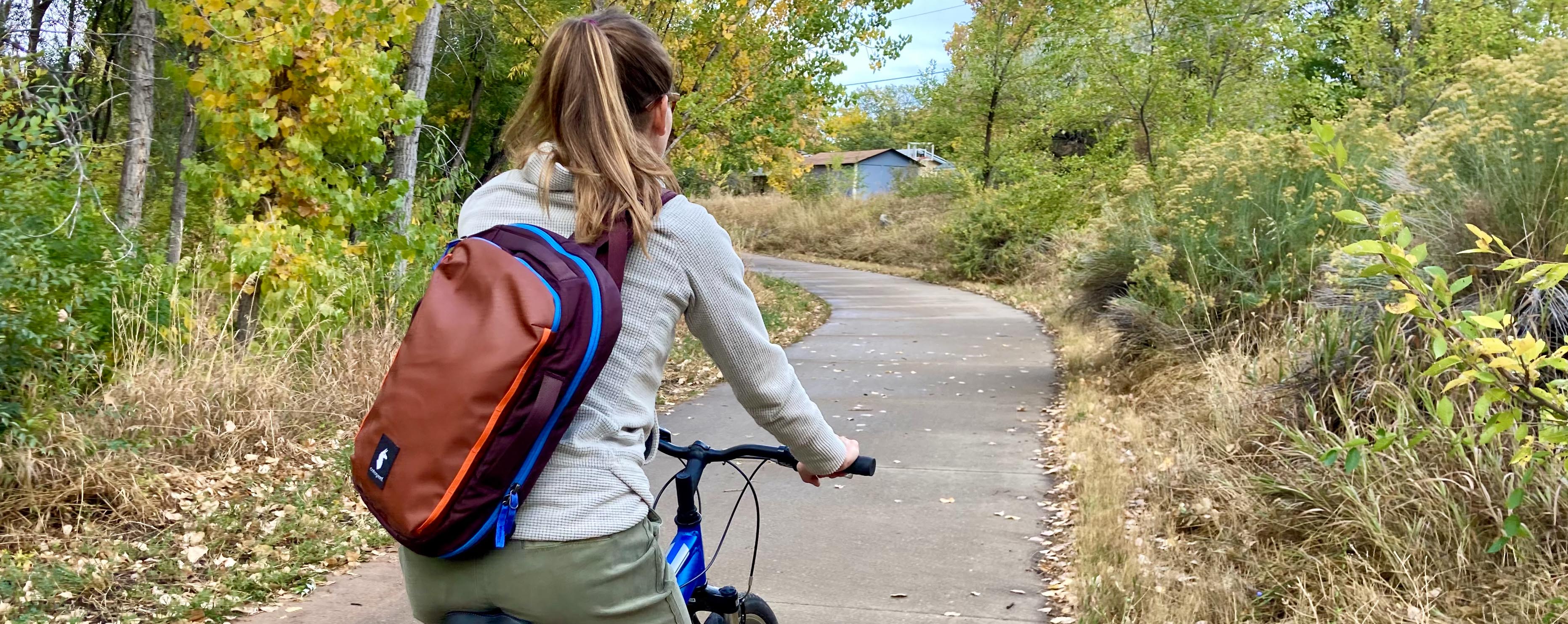Spend a Day with a Trail Crew in the Front Range
When I turned 25, I started to feel the itch to go west. I was living in my hometown in the Southeast, a mile away from my childhood home where I had lived for 21 years of my life. I was feeling restless and became possessed with the desire to explore new horizons. On a whim, I signed up for a three-month term with an AmeriCorps conservation crew. I drove out to Flagstaff, Arizona, and started my new journey! I fell in love with the work – I ended up extending my term in Flagstaff to six months, and then served another four-month term in Boulder, Colorado. After that winter passed, I started working for a professional climbing trail crew in Boulder.
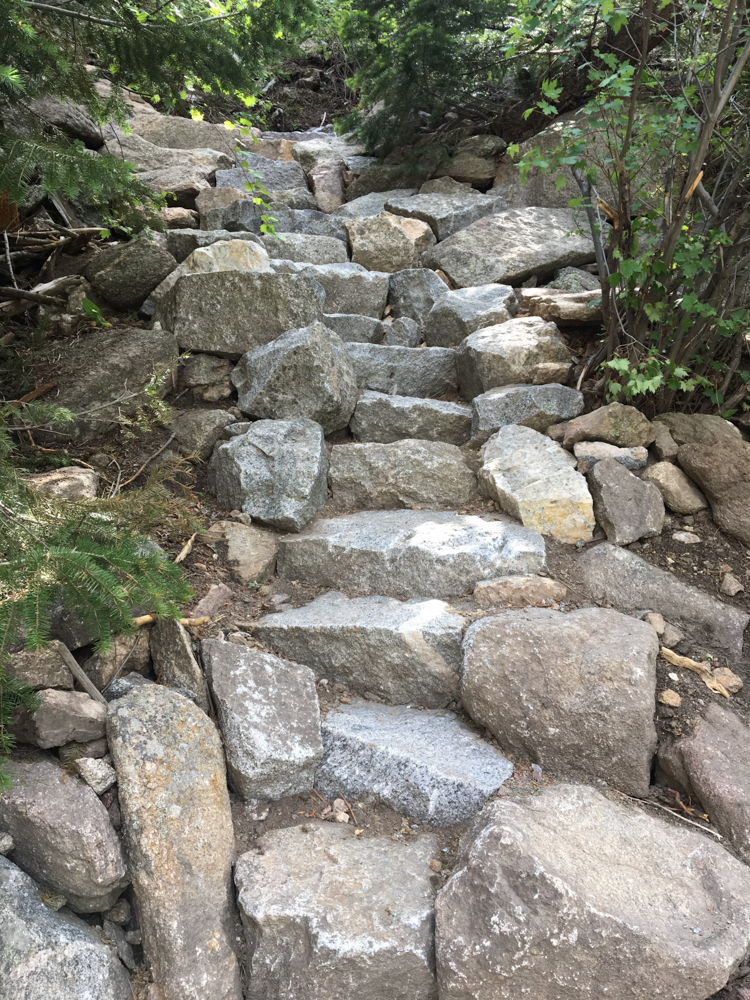
Working outside all day in spectacular wilderness areas is a pretty special thing. Here is a brief glimpse into what a typical day working in the Front Range might look like:
6 am: Most of us are out of our tents at our backcountry campsite by now, bleary-eyed and making coffee. Although it’s mid-July, at 11,000 feet elevation it’s chilly with a nip in the air, and I feel grateful for my puffy jacket. From our luxurious wag bag latrine, one can admire the pinkish-orange alpenglow on the peaks as the sun finally makes its way over the horizon. Not a bad start to the day.
7 am: We shoulder our packs and start the hike to the worksite. It’s still cold out, and our breath is misty in the crisp air. We pass two moose lazily grazing in the bushes by the lake. I remind myself how lucky I am to have a commute like this – I’d take this over sitting in interstate traffic any day.
8 am: We finally reach the worksite, out of breath and sweating already. I put my pack down and we all take a moment to rehydrate, stretch, and put on sunscreen. Once we’re ready to go, we head over to get the tools from our cache and make a game plan for the day. A ruthless round of rock, paper, scissors is the very technical and scientific way we decide who gets to haul the generator and rock drill over to the site.
9 am: I take a short break for an energy bar – unsurprisingly, hauling and building with rocks the size of microwaves and mini fridges is pretty damn exhausting. While I’m at it, I use some medical tape to patch the hole that’s formed in my glove. Sharp rock: 1. Glove: 0.
10 am: The first hikers of the day pass us. They’re friendly and curious, and ask the most common question we receive: “Where do y’all fly all the rocks in from?” The look of incredulity spreads across their faces as we explain that we actually harvest all our material from the surrounding talus and use sheer man-/woman-/person-power to move the rocks and build the structures (staircases, walking surfaces, and retaining walls). No manicured air-lifted rocks required! The hikers have the cutest Australian shepherd and we take our time petting her, because we have our priorities straight. In life and in trail work, always take time to pet the dogs.
11 am: The frustration starts to set in as I search fruitlessly for the “perfect rock” for the next stair in my structure. I try setting rock after rock and am on the brink of giving up entirely when I decide to re-test the first rock I tried. With one tiny adjustment, it slides right into place. I do a facepalm as I realize I just spent the past 30 minutes looking for a rock that was right in front of me the entire time.
12 pm: Lunch break! We all try to find a comfy spot to sit in the talus field – “comfy” is relative when you’re in the backcountry. We chat and tell jokes as we pass around the communal yerba mate mug. A couple of curious marmots and pikas scurry around, shrieking and trying to see if they can score some crumbs. If you’ve never heard a pika’s squeak, I highly recommend checking it out. They are the cutest, tiniest, loudest little guys out there.
1 pm: We stand up, stretch a little, and mentally prepare for the second half of the day. Usually this is when I play some upbeat music to boost my energy. Big shout-out to Cardi B, Dua Lipa, and One Direction for getting me through some exhausting workdays.
2 pm: I pinch a nail placing a rock and unleash a stream of expletives. It always surprises me how excruciating a tiny pinch can be. It’s all worth it though, because a few minutes later a local hiker passes us and thanks us profusely for our work. Small expressions of gratitude from trail users mean so much – trail work can often go unnoticed. Although, sometimes this can be a good thing. In the backcountry a good trail means it’s walkable, but it should also be unobtrusive and should blend into the surrounding landscape.
3 pm: This is our last full hour of moving rocks (or “haulin’ cubes” as we dubbed it last year) and building structures. Another group of hikers and dogs passes us and once more we take our time to pet the goodest doggos.
4 pm: It’s time to start wrapping up the day. This means placing the last rock, making sure the worksite is safe in case any more hikers come by, and returning the tools to the cache. Inevitably, we realize we left a double jack (trail lingo for sledgehammer) out in the talus field, which is essentially like leaving a needle in a haystack. We comb the talus and miraculously locate it. We collect our packs and start the hike back to camp. On the hike back, I always try to stop for a minute to look around and soak in the alpine beauty that is my office. Taking a moment to feel grateful is good for the soul.
5 pm: We make it back to camp, our bodies feeling tired and sore in the best way. We change out of our filthy work clothes and start to prep for dinner, fueling up to do it all over again tomorrow.
Those two years I spent working outside all day were some of the best years of my life. It’s unlike any job I’d had before, and unlike any job I’ve had since,.I’m grateful to have had the opportunities to live and work in some unforgettably magical places. I learned a lot of skills, and discovered a lot about myself in the process.
If you’re interested in getting involved with trail work, whether as a full-time employee, intern, or volunteer, there are a ton of opportunities to do so! Inquiring about volunteer opportunities at your local Parks and Rec department is usually a good place to start. Here is a list of some great resources to check out:
American Conservation Experience (Nationwide)
Boulder Climbing Community (Boulder, Colorado)
Open Space and Mountain Parks (Boulder, Colorado)
Southwest Conservation Corps (Southern Colorado and Northern New Mexico)
Appalachian Trail Conservancy (Along the Appalachian Trail)
About the Gear Tester
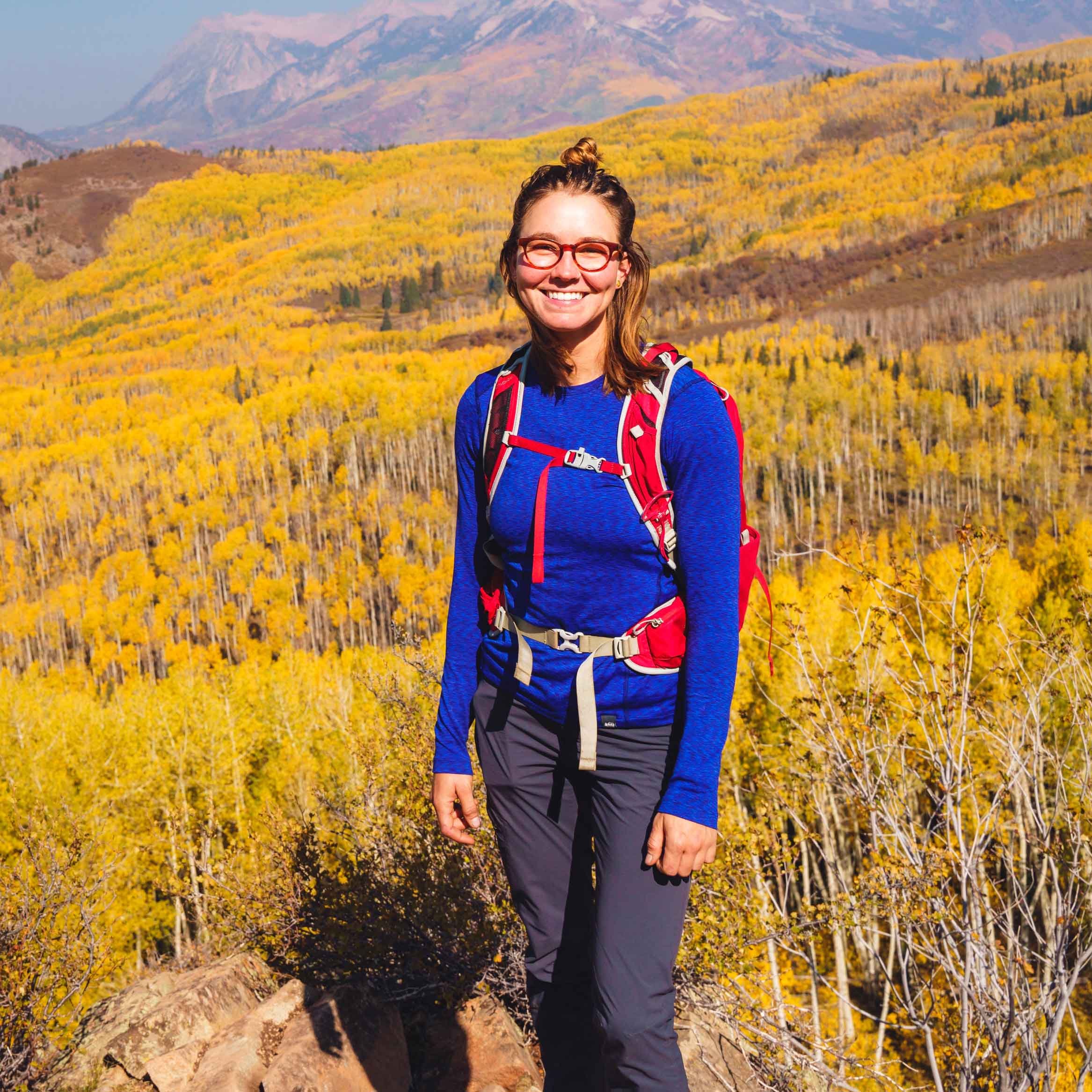
Emma Hulme
Emma Hulme is on the membership team at Outdoor Prolink. Prior to OPL, she worked her butt off as a trail crew member but has found peace behind a computer…..for now. Emma’s passion for the outdoors began at a young age making mud pies and scaling magnolia trees in her backyard. Although she’s moved away from her local backyard, that adventurous spirit lives on. When she isn’t crushing climbs at the crag, you can find her baking the perfect gluten free brownies or quoting extensive scenes from The Office.

